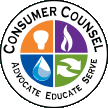Facts about Radon and Drinking Water
This fact sheet provides information about radon as it pertains to drinking water. There is currently no standard set for the amount of radon permitted in public drinking water supplies. The federal Safe Drinking Water Act provided for an extensive study by the National Academy of Science to determine a radon standard in the drinking water. Federal regulations for radon have not yet been adopted. However, the Connecticut Department of Public Health has set an action level for radon in private wells of 5,000 picocuries per liter (pCi/L) and recommends that water departments or utilities also keep the water at the tap below this action level.
WHAT IS RADON?
Radon is a naturally occurring gas that you can't see, taste or smell. It is produced by the breakdown of radioactive elements normally present in soil, rock and water. Radon is found in all 50 states although concentrations vary widely among towns and neighborhoods.
HOW DOES RADON GET INTO MY HOME?
As a gas, radon can diffuse out of rocks and soil. Radon enters homes most commonly through:
- cracks in foundations,
- openings around sump pumps and drains,
- construction joints,
- cracks in walls,
- crawl spaces, and,
- in some cases, from well water.
Radon in well water can be released into the air in the home when water is used for showering and other household uses.
WHAT ARE THE HEALTH EFFECTS ASSOCIATED WITH RADON?
Research indicates there is an increased risk of lung cancer associated with long-term exposure to elevated radon levels. Not everyone exposed to elevated radon levels will develop lung cancer; however, chances of getting lung cancer from radon are associated with:
- How much radon is in the home;
- The amount of time that is spent in the home;
- Whether a person is a smoker or has ever smoked;
- Differences between people's susceptibility; and
- The amount of ventilation in the home, particularly the bathroom.
There is uncertainty about the magnitude of the health risk associated with radon. The U.S. Environmental Protection Agency (EPA) has used a guideline of 4 pCi/L as the action level for indoor radon concentrations. EPA recommends lowering levels to 2 pCi/L whenever possible. In Connecticut, surveys have related average living area levels of 1.3 pCi/L although 20% of the houses were above the EPA action level.
WHAT ARE THE RISKS OF RADON IN WATER?
The concern with radon in drinking water does not come from drinking it, but is primarily associated with showering, laundry and other household uses that transfer radon to indoor air. Radon entering the home through soil is generally recognized as the largest source of radon in homes. Health risks from drinking water containing radon are believed to be less significant than those from breathing air containing radon.
WHAT IS THE RELATIONSHIP OF RADON IN WATER AND RADON IN AIR?
Radon in water can be released into the air when water is used for showering and other household activities. Some researchers have estimated that 1 pCi/L of airborne radon will result from the normal use of a water supply containing 10,000 pCi/L. This number is only an average and subject to variation. The amount of radon transferred from water to air is a function of:
- The waterborne radon level;
- The amount of water used;
- The type of water use activity, e.g. shower (high transfer) vs. running water in a sink (low transfer); and
- The water and air temperatures (as the temperature of the water increases, radon transfer increases).
HOW CAN RADON LEVELS BE REDUCED?
Water supply systems have to be tested to identify current radon levels. Aeration treatment is considered to be the most effective technology for removing radon from drinking water supplies. The federal Safe Drinking Water Act, as amended in 1996, required the EPA to establish a maximum contaminant level in drinking water accompanied by a multimedia mitigation program to address radon risks in indoor air.
WHERE CAN I GET MORE INFORMATION ABOUT RADON?
There continues to be new information available about radon as research continues. For more information about radon and the health risks associated with it contact the U.S. Environmental Protection Agency (EPA) at www.epa.gov/radon/rnwater.html. If you have a question about radon in Connecticut, go to the state Department of Health at www.dph.state.ct.us.

